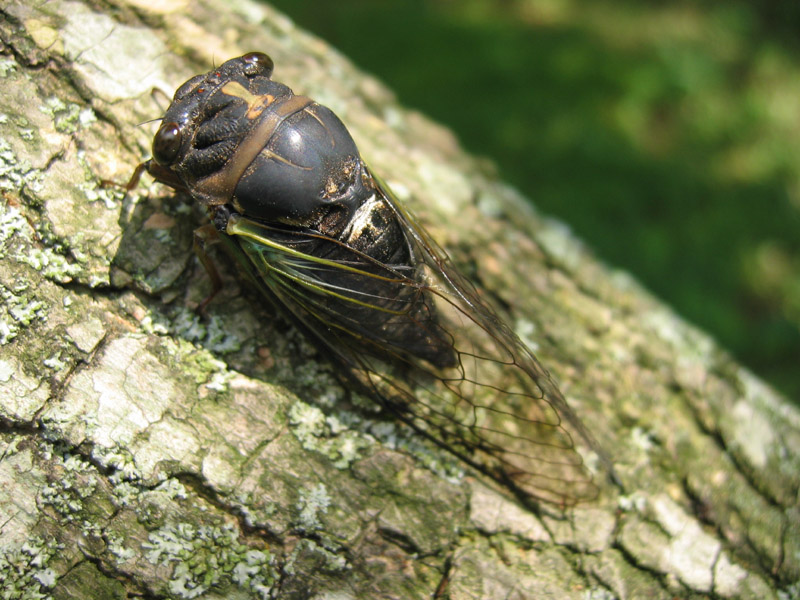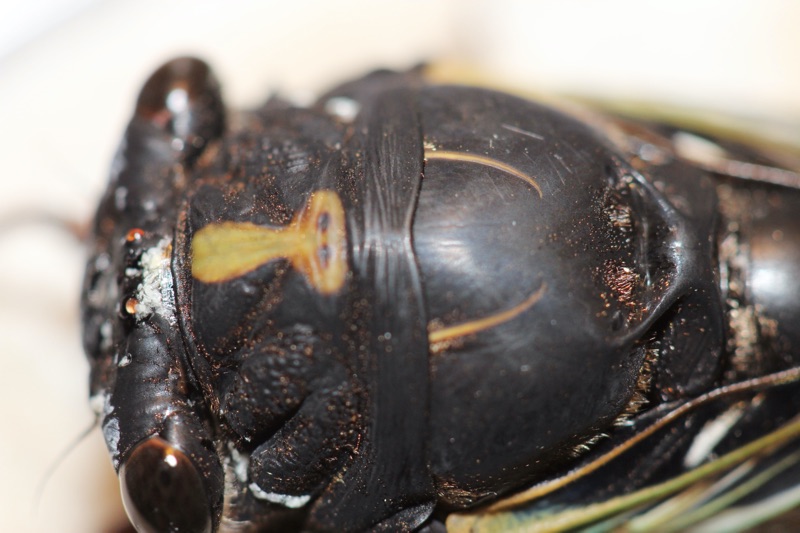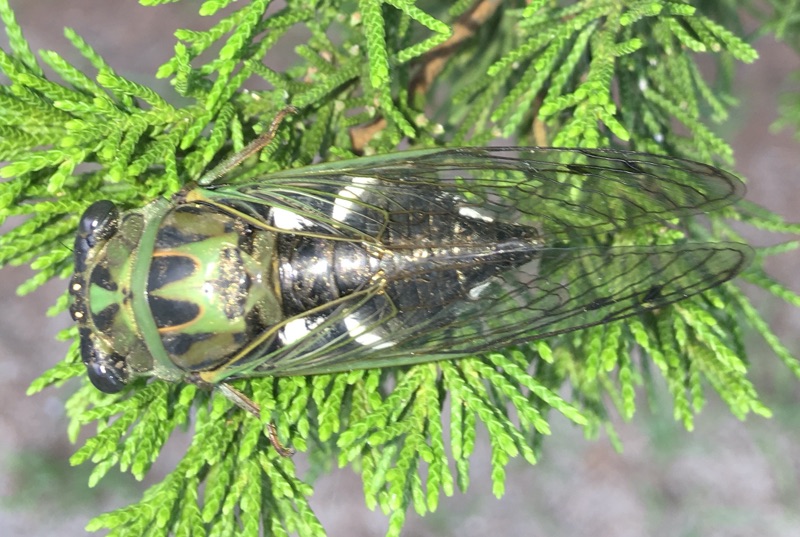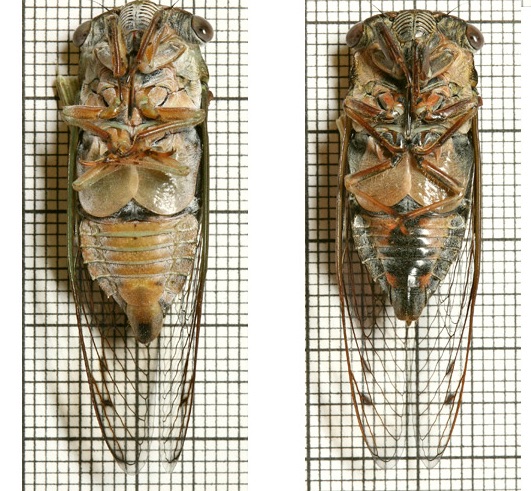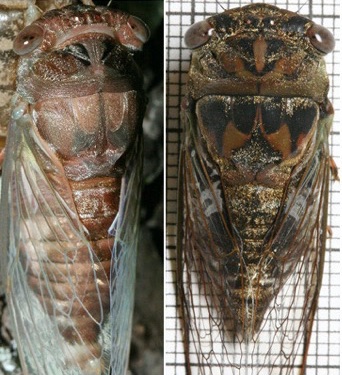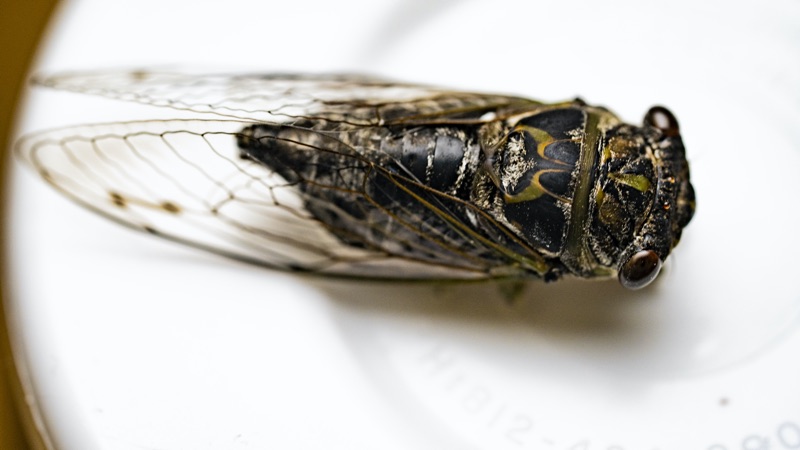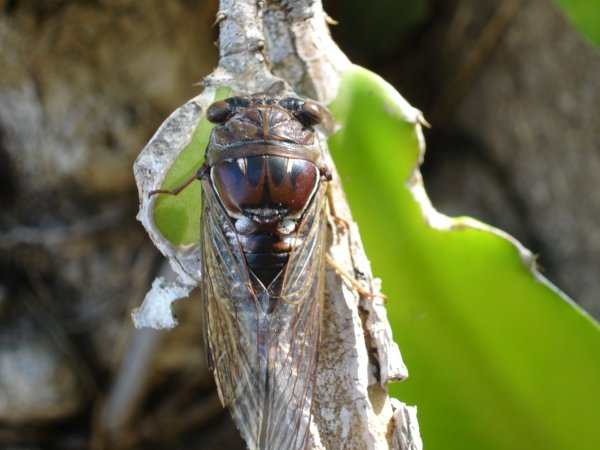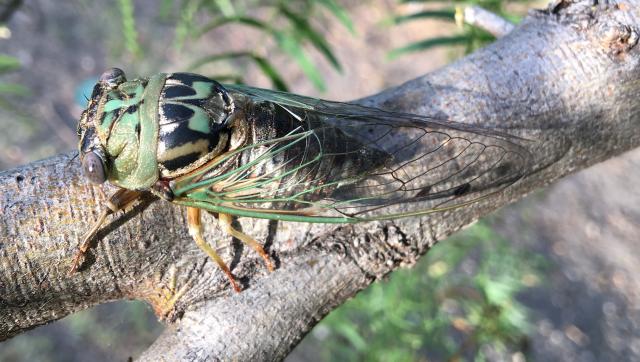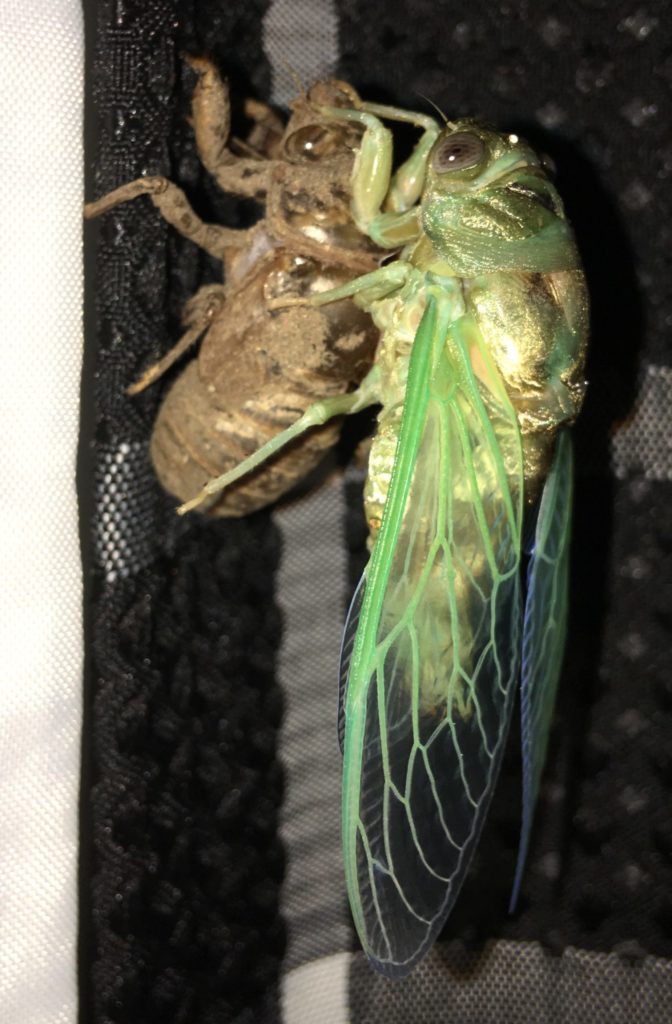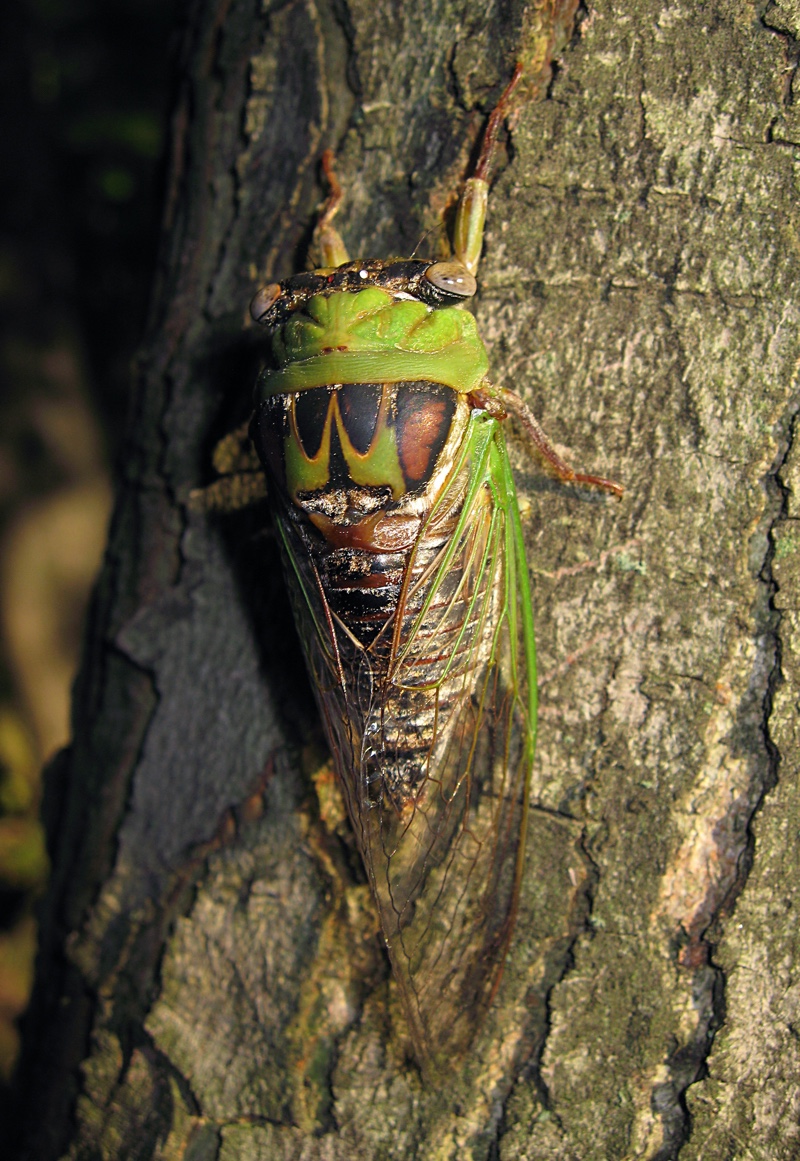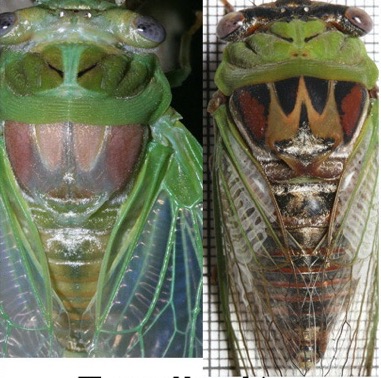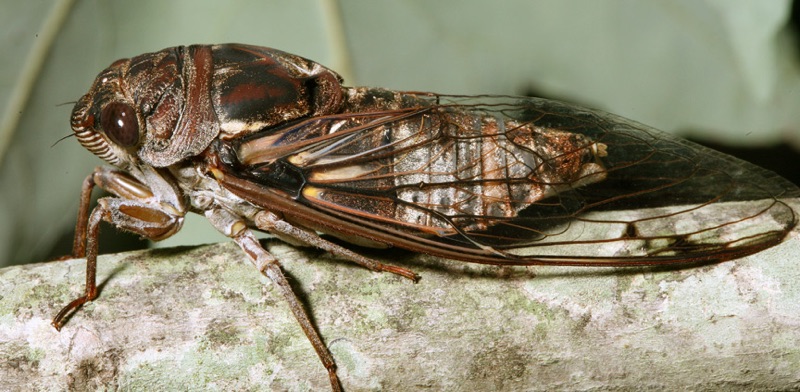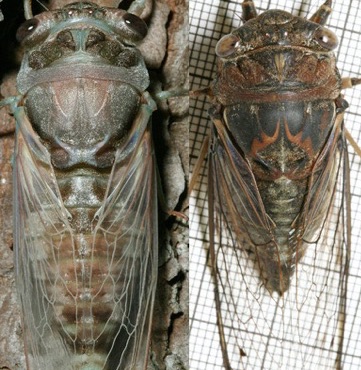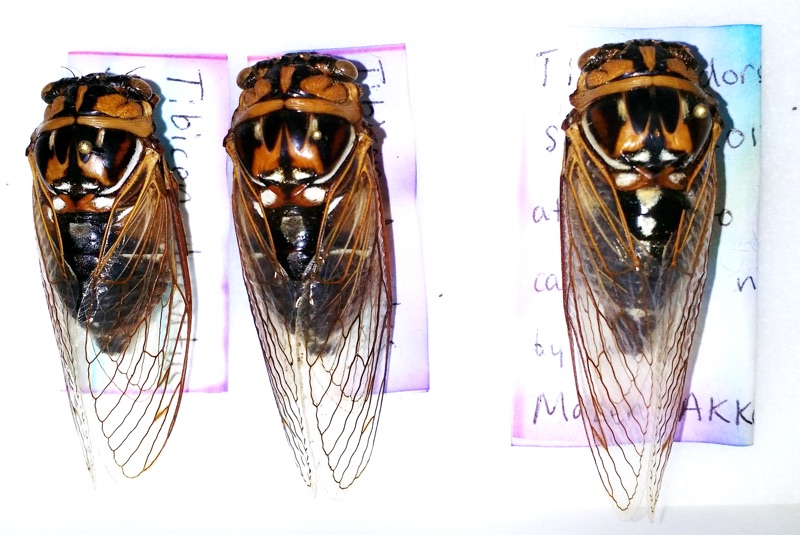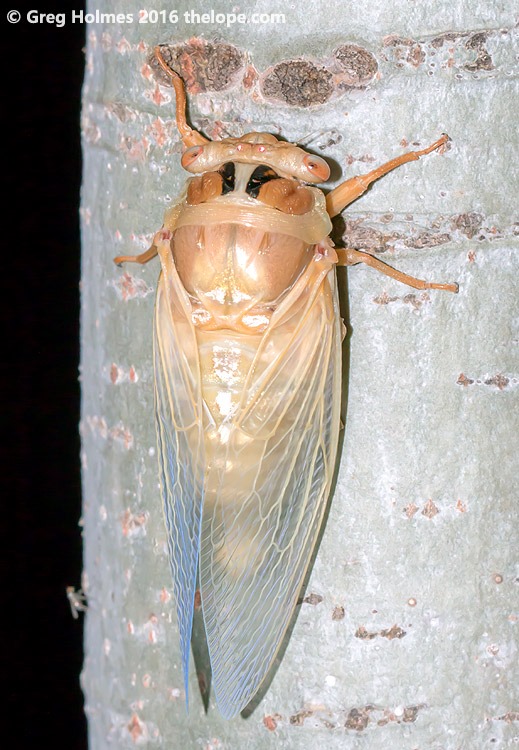Neotibicen lyricen lyricen (De Geer, 1773) aka Lyric Cicada.
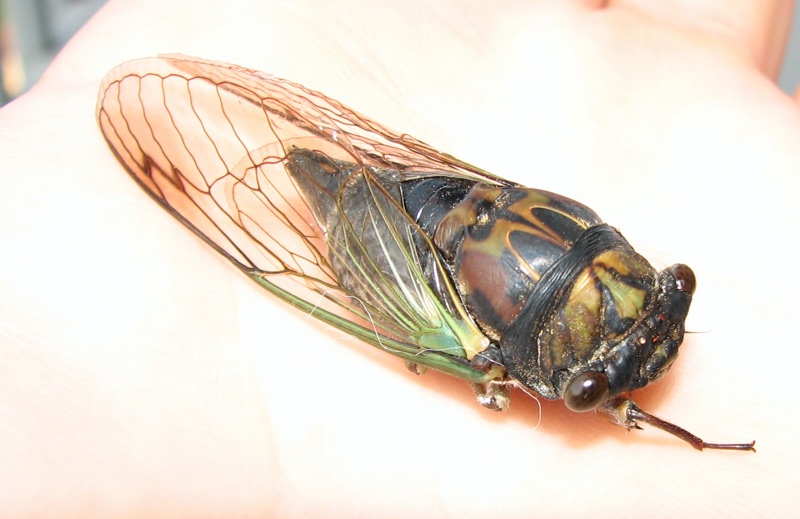
Photo by Dan Mozgai. New Jersey.
All Neotibicen lyricen lyricen images & information on cicadamania.com.
Song type: Call
“Monotonous zinnnnnnnng”:
Source: ©Insect Singers
Video Playlist
Playlists contain multiple videos found on YouTube.
Name, Location and Description
- Cicada Name: Neotibicen lyricen lyricen (De Geer, 1773)
- Short Name: N. lyricen lyricen
- Common Name: Lyric Cicada
- Synonym/Former Name: Tibicen lyricen, Tibicen lyricen lyricen
- When: June-August. Peak in July.
- Where it is found: AL, AR, CT, DE, DC, FL, GA, IL, IN, IA, KS, KY, LA, MD, MA, MI, MS, MO, NE, NH, NJ, NY, NC, OH, OK, ON, PA, RI, SC, TN, TX, VA, WV, WI
- Maps: Biogeography of the Cicadas (Hemiptera: Cicadidae) of North America, North of Mexico [PDF]
- Description: The Lyric cicada, like most small Neotibicen, has a green, black & brown camouflage look, but the key is Lyric cicadas typically have black collars. Its sound is like an angle grinder tool steadily grinding a slightly uneven surface.
- Eye Color: brown
- Pronotal Collar Color: black
- Identification: Bug Guide
- Identification: Bill Reynolds on iNaturalist
- Identification: iNaturalist
- Subject Matter Expert website: Cicada Central
- Taxonomic Information: Integrated Taxonomic Information System
- Song: Insect Singers
Teneral Lyricen images
These are photographs of the same cicada. On the left, it had recently molted (found on the ground like this). The pastel pink, blue, yellow, and orange colors are striking. An hour and a half later most colors have resolved to browns, except for the wings.
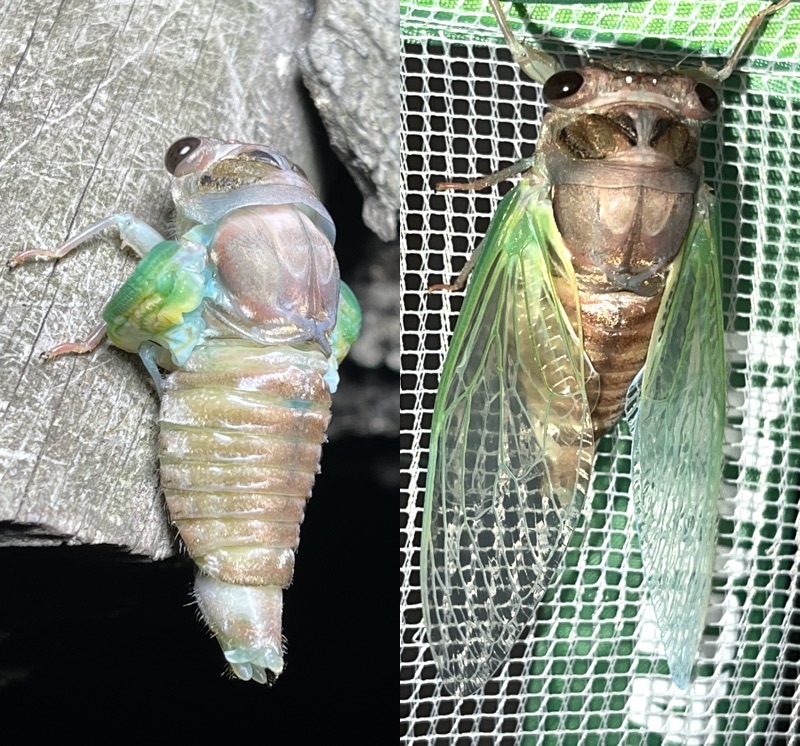
A Neotibicen lyricen lyricen description by Wm T. Davis from 1918 1
Tibicen lyricen (De Geer). PI. VIII, fig. i.
Red Bank, August, 1917, male (J. G. Kizer) ; Logtown, summer.
1917, female (A. Lutken) ; Rienzi, August 23, 1915, male (H. Y. Jumper).
This is a widely distributed insect in the eastern half of the United States, being found from Texas to Florida, and Kansas to Massachusetts. In the higher parts of Virginia, North Carolina, Tennessee and Georgia, the variety engcUiardti (Davis) is the pre- vailing form of the species. This is characterized by having the pro- notum and mesonotum nearly all black, except for the somewhat anchor-shaped, tawny spot on the former. It will perhaps be found in the uplands of Mississippi.The song of lyricen is a rather monotonous zing.
Wm T. Davis’ Identification Key 1
A. Large, heavy bodied species ; head broad, uncus simple, and first cross vein in the fore wings starting from radius 3 far back, or about one third distant from base of first marginal cell.
B. Uncus longer than broad. Black species with green or greenish markings and black area on the central part of the abdomen beneath, except in sayi [Neotibicen tibicen tibicen], and new variety of davisi [Neotibicen davisi].
CC. Hind margin of pronotum or collar black or nearly so (except in sayi var. australis [Neotibicen tibicen australis]).
D. Central area of the abdomen beneath black.
Opercula much shorter, more rounded, and the black area on the under side of the abdomen in the nature
of an even stripe. Uncus not forked.
lyricen (De Geer).
Classification:
Family: Cicadidae
Subfamily: Cicadinae
Tribe: Cryptotympanini
Subtribe: Cryptotympanina
Genus: Neotibicen
Species: Neotibicen lyricen
Sub-species: Neotibicen lyricen lyricen (Degeer, 1773)
Sub-species: Neotibicen lyricen virescens Davis, 1935
Sub-species: Neotibicen lyricen engelhardti (Davis, 1910)
List of sources
- Davis, W.T. 1918. Mississippi Cicadas, with a Key to the Species of the Southeastern United States. Journal of The New York Entomological Society. Vol. XXVI. Read on archive.org.
- Full Binomial Names: ITIS.gov
- Common names: BugGuide.net; The Songs of Insects by Lang Elliott and Wil Herschberger; personal memory.
- Locations: Biogeography of the Cicadas (Hemiptera: Cicadidae) of North America, North of Mexico by Allen F. Sanborn and Polly K. Phillips.
- Descriptions, Colors: personal observations from specimens or photos from many sources. Descriptions are not perfect, but may be helpful.
Notes:
- Some descriptions are based on aged specimens which have lost some or a lot of their color.
